求戴維等效電路的EPOT基于偏置電阻網(wǎng)絡(luò)
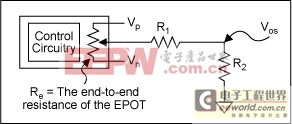 | 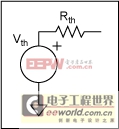 |
| Figure 1. | Figure 2. |
Note 1: In this analysis, N = (Current EPOT setting)/(total number of taps). In other words, for a 32 tap EPOT, a setting of 8 makes N = 0.25.
Note 2: Vp = the positive supply voltage and Vn = the negative supply voltage
Note 3: Vpot = the voltage at the wiper of the EPOT

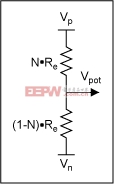
Figure 3.
To find the EPOT's equivalent resistance (Rpot), short out the sources, i.e. it's just the two resistances in parallel.

The final step is to substitute the Thevenin circuit for the EPOT into the original circuit and find the overall Thevenin replacement.


Figure 4.





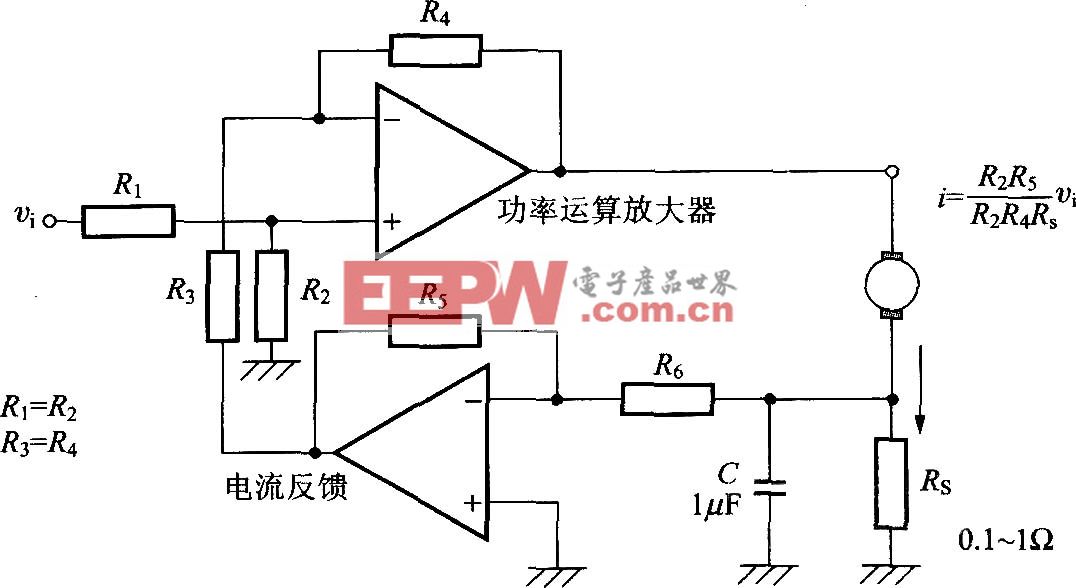

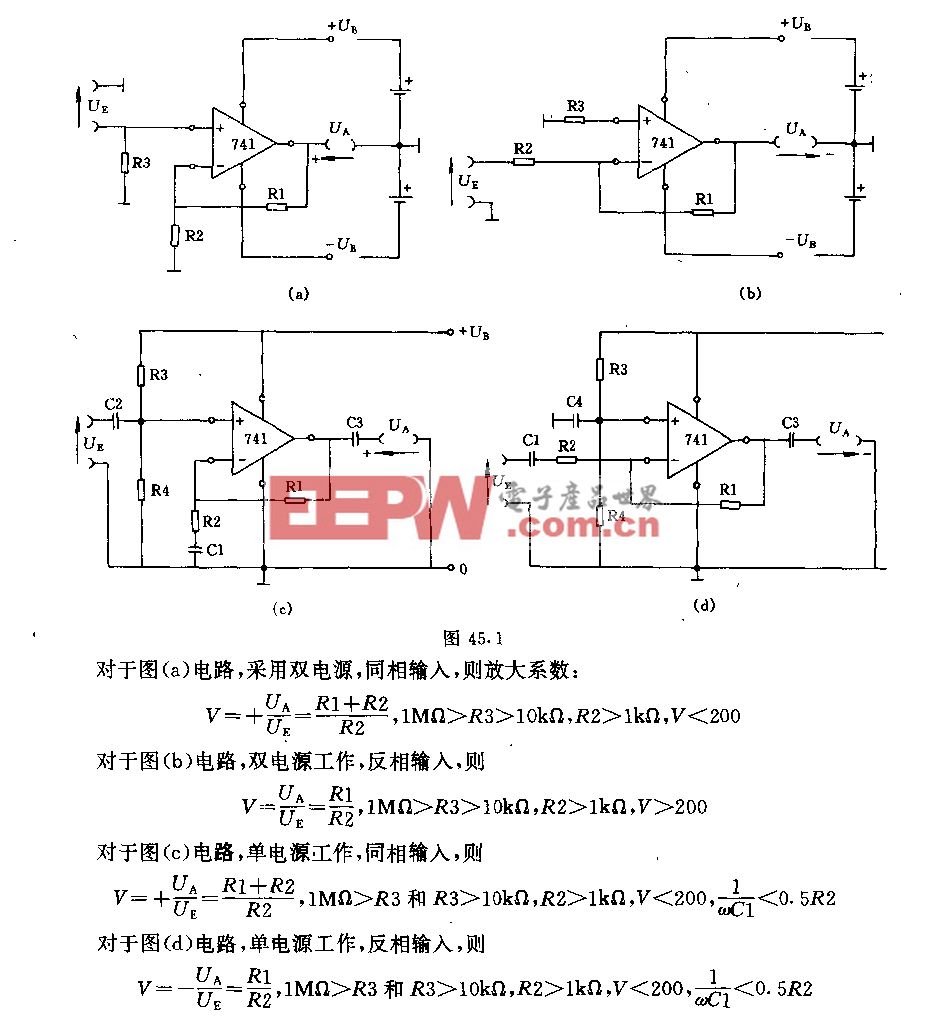

評(píng)論